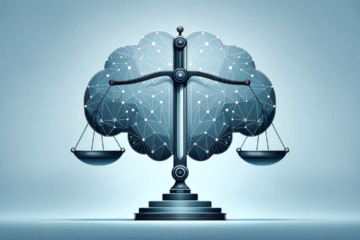
This article is written by Vandanaof 2nd year of LL. B at Lloyd Law College, Greater Noida, an intern under Legal Vidhiya
ABSTRACT
From being looted and unethically ruled over by the East India Company and the British crown for almost 200 years to Becoming the largest democracy in the world and the first common wealth country to make and successfully enforce its Indigenous constitution, India as a nation came a long way. When India gained its independent in the year 1947, one of the loudest demands raised by the people of nation in one voice, was to develop for itself a constitution. And so did the constituent assembly develop, the constitution for the independent India.
Though Indian constitution is inspired from the constitution of many countries, it does have many salient features making it one of the unique constitutions in the world. From, being the lengthiest constitution in the world to having the tendency of a rigid and flexible constitution. From having integrated judiciary to having a federal structure with unitary tilt. There any features of the Indian constitution which makes it different from any other constitution of the world.
KEYWORDS – Constitution of India, lengthiest constitution, integrated judiciary, federal structure with unitary tilt, universal adult franchies, parliamentary form of government, constituent assembly, secular state, fundamental rights, fundamental duties.
INTRODUCTION
“India is the mother of democracy ”1 as quotes by Prime Minister, Shri. Narendra Modi. He was right when he supported his statement by giving the example of the Mahabharata and Vedas. Democracy was a well-known phenomenon before The East India Company and later The British crown started ruling and looting India. And when in 1947 India was again becoming an independent nation there was no any doubt that Indian governance will be according to democratic principles.
In the year 1947 when India became an independent nation it was a day of celebration but also the day of concern as there was no constitution of India for Indians. India was governed by Government of India Act, 1935. India was set to become the largest democracy on its independence day 15th August, 1947. It was a hefty task to draft a constitution for a country looted and suppressed for almost 200 years and having citizens belonging to almost all religion present in the world. Yet India managed to draft for itself a constitution well known and praised all over the globe. The constitution of India played the most significant role in making the India the only country was able to manage its affairs beautifully unlike many other colonized countries. India constitution was and still remains the lengthiest written constitution of in the world2. While India drafted its constitution through the constituent assembly framed under cabinet mission plan, the people who were part of India were indirect representatives of Indian people in the assembly.
The constituent assembly managed to draft the constitution in 2 years 11 months and 17 days. The constitution of India was adopted on 26th of November 1949 and was enforced on 26th of January 1950. In the year 2023 it is 73 years since we have enforced our constitution there have been 105 amendments in the constitution of India, still the basic structure of constitution as described in Keshvananda Bharti case3 remains enacted.
OBJECTIVES
Through this article I am trying to elaborate all the salient features of Indian constitution which makes the constitution one of the best constitutions in the world. In this article I am aiming to make a comprehensive piece to study for the audience and I believe this will enhance their knowledge of the Indian constitution and different feature therein enumerated.
THE INDIAN CONSTITUTION – MARVELLOUS WRITING BY THE FRAMERS OF INDIAN CONSTITUTION
The Constituent assembly while drafting the constitution for independent India realized that it is not an easy task to draft a constitution satisfactory for every person living in the country. The framing of constitution for India started in December 1946 when the members met to discuss about the constitution very first time on 09 December 1946. By the time the bloodsheds of people were very much visible not just because of and by the British government but also because of demands of partition. It was than a hefty task of the members of assembly to draft such a constitution which is comprehensive in nature and is securing the basic needs and wants of people. A constitution so well versed that though secular is nature (the word secular was added in preamble by 42nd constitutional amendment Act 1976 but the traits of a secular constitution were always there impliedly if not expressly in article 25 to 28) still does not hurts the religious sentiment of any community. The constitution of India can be said is heavily inspired from constitution of many countries but it is so just to make sure that the people in India are getting the bouquet of best available flowers.
Justice Gokhale addressing a judges meet in the year 2009 said, “Our constitution has survived 94 amendments, and continues to remain the basic document of our democracy”4. The constitution of India has survived 105 total amendments by the year 2023, and still it is standing strong on its grounds. The grounds which were held tight by our constitution makers and this was only possible because of the wisdom of our constitution framers they knew however well the constitution is absolute power can corrupt anyone and anything. The framers of constitution thus made sure to not give all the power to any particular agency of Government they kept check and balances in the constitution. When the power to legislate was given to the parliament and state assemblies the power to check the arbitrariness of power was given to the integrated judiciary of the country.
One such brilliance on balancing power given in our constitution was checked during the 42nd constitutional amendment. In the 42ndconstitutional amendment the central government in the year 1976 tried to amended the constitution rigorously that the amendment itself is known as a mini constitution. But thankfully in the year 1973 in the case of Keshvananda Bharti, the doctrine of basic structure was given and it was held by the apex court in that judgement that parliament cannot alter the very fundamentals of our constitution.
Thus it is interesting to know more about all the salient features of constitution to understand why the constitution of the largest democracy in the world is also one of the finest written documents on the Earth till date.
THE SALIENT FEATURES OF INDIAN CONSTITUTION
Inspired from various sources – Theconstitution of India when framed had total 395 articles 8 schedule and 22 parts in total. And it was clearly visible that many significant articles and there concept was inspired from the constitution of many other countries. Not only the constitution of other countries but also Government of India Act 1935 inspired the major portion of the Independent India’s constitution. Dr. B.R. Ambedkar said that constitution of India is framed after ransacking all the known constitution of the world5. The fundamental rights and directive principles of state policy are inspired from American and Irish constitution.The cabinet government and the relation between the executive and legislature are inspired from British constitution. There are provisions which are derived from constitution of Canada, France, USSR, Germany etc.
Lengthiest written constitution – The constitution of India is the lengthiest written constitution till date after its formation in 1949. The inspiration of written constitution is from the American constitution. The constitution of India is a comprehensive document which is the primary source of governance in India. The reasons for the Indian constitution to be this lengthy are many. Firstly, the geographical structure of the Indian continent, the constitution of India is being the primary source of the law has to satisfy the need of every person living in the country. Secondly, historical factor. The constitution of India as inspired from the government of India Act 1935 which itself is a lengthy document. Thirdly, the constitution of India is constitution for both the centre and states of India. Lastly, dominance of legal luminaries in the constituent assembly as most of the member in the constituent assembly was attorney, solicitors or advocates. And their comprehensive writing skills affected the length of the constitution of India.
Blend of rigidity and flexibility – There are two types of constitution, rigid constitution and flexible constitution.The constitutions which can be amended easily are known as flexible constitution and the constitution which cannot be amended easily and requires satisfaction of some special provision making the constitution a rigid constitution. The constitution of America is an example of rigid constitution and the constitution of Britain is an example of flexible constitution. However, the constitution of India does not fall strictly under anyone of these categories. The constitution of India contains both kind of provisions and some part of Indian constitution can be amended easily by simple majority but some parts of constitution need ratifications of not only parliament but also half of the states. The amending provision of Indian constitution is given under the article.368. This feature of Indian constitution thus makes it one of a kind.
Parliamentary form of government – India has adopted parliamentary form of government which was inspired from the British parliamentary system. This system of parliament is based on the principle of co-operation between legislature and executive. The features of parliamentary form of government are: –
Presence of nominal and real executives,
Majority Party rule,
Collectiveresponsibility of the executive to the legislature,
Membership of the ministers in the legislature,
Dissolution of lower house.
Integrated and Independent Judiciary – Indianconstitutionestablishesa judicial system which is both integrated as well as independent. The Supreme Court stands at the top of judicial hierarchy in India. Subordinated to it are High Courts and subordinate courts. The Supreme Court is the highest court of appeal in India, It is the guarantor of constitutional rights of people of India and it is the guardian of constitution. India constitution has also given the power of judicial review to the High Courts and Supreme Court of India, to keep a check and balance on legislations made by the parliament and state legislature. Independent judiciary is the basic feature of Indian constitution, and it was held in the case of S.P. Gupta 6. Indian judiciary has a pyramidal structure with lower judiciary at the end and Supreme Court at the top.
Fundamental Rights – There are 6 fundamental rights enumerated in the constitution of India in part 3 from article. 12 to 34. These rights are justiciable in nature are there to promote the political democracy in the country. In case of violation of any fundamental right the person can directly go to the High Courts or Supreme Court for enforcement of his right. Though, the fundamental rights are not absolute in nature some reasonable restrictions can be put on the fundamental rights. In the case of Golaknath7, the apex court held that parliament cannot curtail the fundamental rights nut in the case of Keshvananda Bharti it was held that fundamental rights are amendable but only to a certain limit by following basic structure doctrine.
Synthesis of Parliamentary Sovereignty and Judicial Supremacy – The doctrine of sovereignty of parliament is inspired from British parliament while the principle of judicial supremacy with that of American Supreme Court. The scope of judicial review power of the Supreme Court in India is much narrow than that in America. The parliament of India can amend the major portion of the constitution of India and the Supreme Court of India thus can review any such law by the power of judicial review.
Universal Adult Franchise – For the election of Lok Sabha the constitution of India has adopted universal adult franchise. Where in, every citizen of the country can vote in the Lok sabha elections and state assembly election. It was introduced in the year 1989 by 61st amendment, before the amendment the age of voting was 21 years or above for people. Giving rights to vote to people of country gives them confidence on governance and government.
Single Citizenship – Unlike American constitution, the Indian constitution gives single citizenship to people. Which means that the people doesn’t have to acquire dual citizenship one for the state they are living in and one for the country. Which also means any citizen of the India living in any part of country enjoys the same political and civil rights.
Three Tier Government – Originally the Indian constitution only provided for dual polity but under 73rd constitutional amendment and 74th constitutional amendment third tier government was introduced in India. While 73rd constitutional amendment in 1992 gave constitutional recognition to panchayats in rural areas the 74th constitutional amendment gave recognition to municipalities in urban areas.
Emergency provisions – Under Part 18 of Indian constitution from article 352 to 360, are given elaborative emergency provisions. These provisions are inspired from constitution of Germany. There are three types of emergencies given under Indian constitution,
Article.352– National emergency provisions,
Article.356 – State emergency provisions,
Article.360 – Financial emergency provisions.
The power to proclaim state emergency, to not be misused by the government Supreme
Court in the case of S.R. Bomai8, the SC held in this case that.
The power of President to dismiss a state government is not an absolute power.
It was held that President can only exercise his power to proclaim emergency after his rule is approved by both the houses of parliament.
And SC also held that the emergency imposed under article.356 is subject to judicial review.
Fundamental Duties – Part 4 of Indian constitution contains fundamental duties. This part was not enumerated in original constitution of India and was introduced by 44th amendment in the year 1978. Later on by amendment in the year 2002 the total fundamental duties were increased to 11 from originally 10 fundamental duties. These duties are not enforceable and are directive in nature to citizens.
Federal in nature with unitary tilt – The constitution of India contains all the features of a federation i.e., supremacy of constitution, written constitution, independent judiciary etc. However, Indian constitution does have some strong non-federal features also like, single constitution, single citizenship, strong centre etc. In the constitution of India there is no any provision mentioning ‘federation’ anywhere. In the article.1 of constitution it is explicitly written ‘Union of States’ which described that Indian federation is not result of any agreement between states. Also, no any state has power to secede from federation. In the case of Satpal Vs. State of Punjab, the supreme court of India held that constitution of India is more Quasi-federal than federal or unitary. Ours is a constitution with a combination of federal structure with unitary features…9.
CONCLUSION
Itis clearly visible that constitution of India is certainly different from constitution of any other country. The constitution of India being made in the middle of 20th century had many constitutions for its inspiration. Salient features of constitution like single citizenship, emergency provisions, three-tier government, federal in nature but unitary in spirit etc. While many of these features are inspired from already developed countries constituent assembly had the opportunity to select the best functioning features and develop for the Independent India the best constitution.
REFERENCES
1) The Hindu,
last visited on14/09/2023
2) The Hindustan Times,
https://www.hindustantimes.com/analysis/the-constitution-was-a-leap-of-faith/story-nYuvRLB2JcKRc2aQ0WqKxL.html, last visited on 14/09/2023
3) Keshavananda Bharti Vs. State Of Kerela, AIR 1973 SC 1461
4) The Times of India,
https://timesofindia.indiatimes.com/city/chennai/cj-all-praise-for-indian-constitution/articleshow/5273302.cms, last visited on 14/09/2023
5) M Laxmikant, Indian Polity Mc Graw Hill 3.2, 2021.
6) S.P. Gupta V. Union Of India AIR 1982 SC 149.
7) Golaknath V. State of Punjab 1967 AIR 1643,1967 SCR (2).
8) S.R. Bomai V. Union Of India 1994 2 SCR 644.
9) Satpal V. State of Punjab AIR 1981 SC 2230.




0 Comments